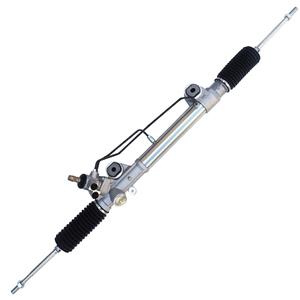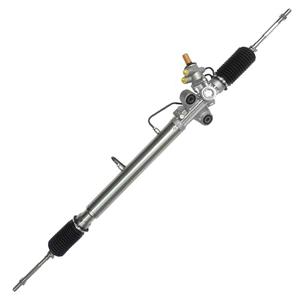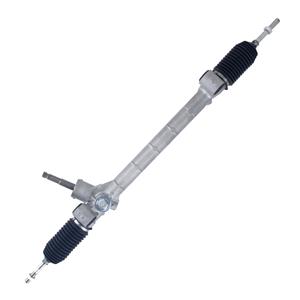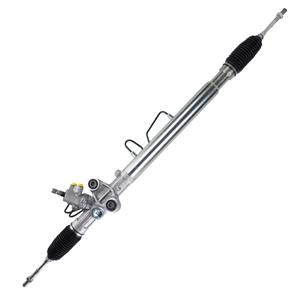Should I Repair or Replace the Power Steering Rack?

When a car's power steering rack fails, car owners often face an important decision: should they repair or replace this key component directly? This question not only involves cost considerations, but also concerns the safety and handling performance of the vehicle.
In addition, many car owners are also worried about whether the repaired power steering rack will affect its performance and thus the driving experience. This article will explore this topic in depth to help car owners make an informed decision.
What Is the Role of the Power Steering Rack?
The power steering rack is one of the core components of the car's steering system. It transmits the driver's steering action to the wheels through a hydraulic or electronic power system to achieve steering. The main functions of the power steering rack include:
● Enhance the driver's steering force: Through a hydraulic or electronic power system, the driver's force when turning the steering wheel is reduced, making driving easier.
● Ensure accurate vehicle steering: The design of the power steering rack allows each turn of the steering wheel to be accurately converted into a corresponding angle change of the wheel to ensure the vehicle's handling.
What Are the Common Problems with Power Steering Racks?
Although the power steering rack should maintain stable working condition throughout the life cycle of the vehicle, some common problems may occur with the rack due to long-term use or external factors, including:
● Hydraulic oil leakage: Hydraulic oil leakage is one of the most common faults in hydraulic power steering systems. Leakage usually occurs at the seal of the rack, resulting in insufficient power assistance or complete failure.
● Steering insensitivity or jamming: When the mechanical parts inside the rack wear or accumulate impurities, it may cause steering insensitivity or even steering wheel jamming.
● Abnormal noise: Wear or damage inside the rack may cause abnormal noises when steering, such as clicking or squeaking. This usually indicates severe wear of the internal parts of the rack.
● Steering shake or tremor: When the connection between the rack and other steering components (such as the steering tie rod) is loose, the driver may feel the steering wheel shake or tremor while driving.
After understanding the role and common problems of the power steering rack, we can further explore whether this key component should be repaired or replaced directly when it fails.
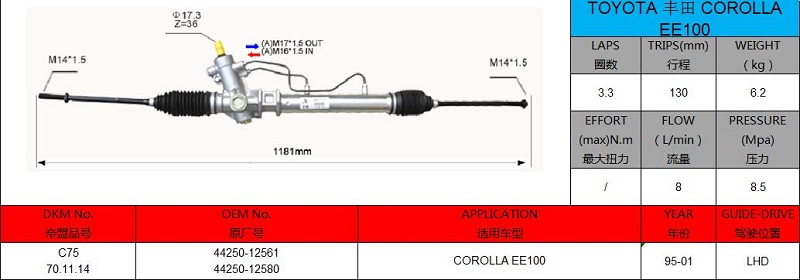
Pros and Cons of Repairing a Power Steering Rack
Repairing a power steering rack is often the first option that car owners consider when they discover a problem with the rack. Repairs are usually less expensive than replacing the entire part, but that doesn't mean repairs are necessarily the best option. Here are the pros and cons of repairing a power steering rack.
What are the Advantages of Repairing a Power Steering Rack?
Advantages of Repairing a Power Steering Rack:
1. Lower cost
2. Reduced repair time
3. Retaining the original part
Lower cost
Repairing a power steering rack is often much cheaper than replacing the entire part. Especially in the case of minor problems or minor damage, repairs can quickly restore the function of the rack without incurring the high cost of replacing parts.
Reduced repair time
In some cases, repairing a rack may take less time than replacing it. For example, a leak in the hydraulic system may only require replacing a seal or fixing an oil leak, which can be done in a few hours.
Retaining the original part
If the owner wants to keep the original rack instead of using a replacement, repairs can keep the vehicle in original condition. In some cases, the original part may be superior in quality and compatibility to the replacement part.
What are the Disadvantages of Repairing a Power Steering Rack?
Disadvantages of Repairing a Power Steering Rack:
1. Unstable repair results
2. May cause repeated failures
3. May affect safety
Unstable repair results
The performance of a repaired power steering rack depends on the quality of the repair and the severity of the problem. In some cases, the repair may not fully restore the original performance of the rack, especially when the internal mechanical parts are already severely worn.
May cause repeated failures
A repaired rack, especially a hydraulic system repair, may fail again in a short period of time. For example, the replacement of seals may not completely eliminate the leakage problem, resulting in repeated repairs.
May affect safety
If the repair quality is not high or the rack problem cannot be completely solved, it may affect the steering stability and safety of the vehicle. Especially when driving at high speeds or emergency steering, the reduction in rack performance may lead to dangerous driving situations.
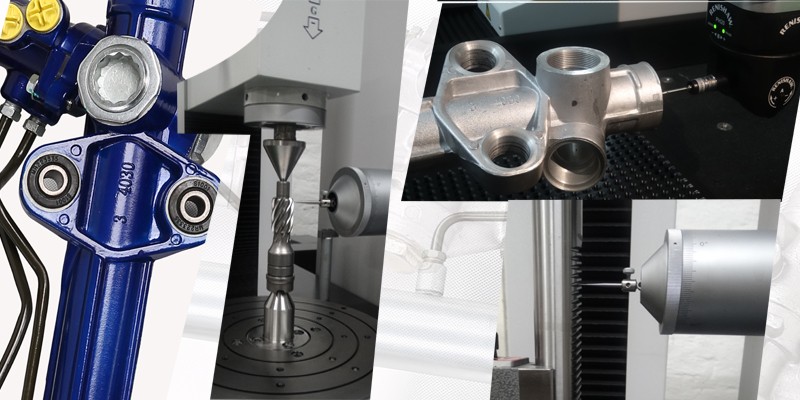
Pros and Cons of Replacing a Power Steering Rack
Compared to repairing, replacing a power steering rack is generally considered a more thorough solution, but this method also has its pros and cons.
What are the Advantages of Replacing a Power Steering Rack?
Advantages of Replacing the Power Steering Rack:
1. Restore the original performance of the vehicle
2. Reduce the need for subsequent repairs
3. Improve vehicle safety
Restore the original performance of the vehicle
By replacing a new power steering rack, the vehicle's steering system can be restored to its factory state. The new rack usually provides the best steering response and handling performance, ensuring driving comfort and safety.
Reduce the need for subsequent repairs
The new rack after replacement usually does not have problems again in the short term, which means that car owners do not need to worry about repeated repairs and maintenance. In terms of long-term use costs, replacement may be more economical than frequent repairs.
Improve vehicle safety
The new rack can not only restore the original performance of the vehicle, but also provide reliable steering control at critical moments. This is one of the important measures for car owners to ensure driving safety.
What are the Disadvantages of Replacing the Power Steering Rack?
Disadvantages of Replacing a Power Steering Rack:
1. Higher cost
2. Longer repair time
3. Need to find a suitable replacement
Higher cost
The cost of replacing a power steering rack usually includes the cost of parts and labor, which can be several times higher than repairing. Especially for high-end or imported models, the replacement cost can be very expensive.
Longer repair time
Compared to repairing, replacing the entire rack may take longer. This not only includes removing and installing the new rack, but also requires system testing and adjustments to ensure that the new part is compatible with the other systems of the vehicle.
Need to find a suitable replacement
In some cases, car owners may have difficulty finding a replacement rack that exactly matches the vehicle. Although there are many replacements on the market, their quality and performance may not be as good as the original parts, which requires car owners to pay special attention when choosing.
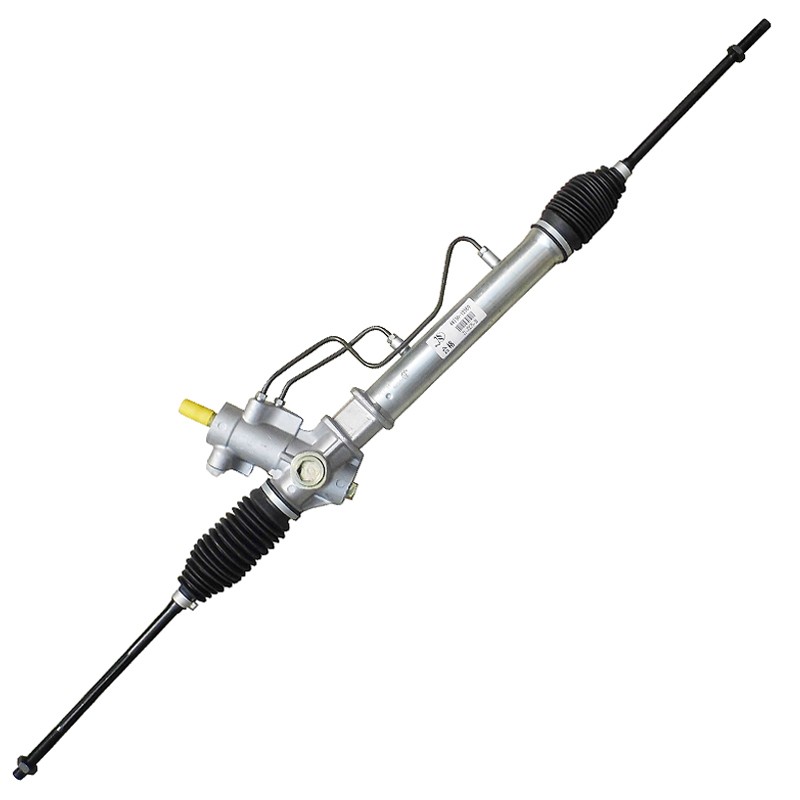
Will the Performance of the Repaired Power Steering Rack Be Reduced?
When car owners decide whether to repair the power steering rack, one of the most important questions they often care about is: Will the performance of the repaired rack be reduced? The answer to this question is not a simple "yes" or "no", but depends on multiple factors.
Quality of repair
The quality of the repair is a key factor in determining the performance of the repaired rack. If the repair technician is experienced and the repair tools and materials are of high quality, the performance of the repaired rack can be close to the original factory state. However, if the repair quality is not high or inferior replacement parts are used, the performance of the repaired rack may be significantly reduced.
Degree of damage to the rack
The degree of damage to the rack is also an important factor affecting the repair effect. If the rack has only minor wear or leakage, the performance reduction after the repair may not be obvious. However, if the mechanical parts inside the rack have been severely damaged, the performance may not be restored to the original level even after the repair. In this case, the repair may only delay the replacement time, but will not fundamentally solve the problem.
Conditions of use
The repaired rack will also perform differently under different conditions of use. For example, under extreme driving conditions, such as driving at high speeds or on rough roads, the repaired rack may show reduced performance. Under normal city driving conditions, this performance difference may not be obvious.

How to Make a Wise Choice?
When choosing between repair and replacement, car owners need to consider a variety of factors, including cost, time, vehicle usage, and performance after repair. First, car owners should ask a professional repair technician to conduct a comprehensive inspection of the rack to assess the extent of its damage. If the damage is minor, you can consider repairing it; if the damage is serious, replacement may be a better option.
Second, the age, mileage, and overall condition of the vehicle should also be taken into consideration. If the vehicle has been used for many years and other key components are also nearing the end of their service life, replacing the rack may be more conducive to extending the overall service life of the vehicle. Car owners should understand the specific costs of repair and replacement in advance and compare them with the residual value of the vehicle. If the cost of repair or replacement is close to or exceeds the market value of the vehicle, then other options may need to be considered, such as purchasing a new or used car.
Before deciding to repair or replace, car owners should also communicate with their insurance company to find out whether the insurance covers the relevant expenses. In some cases, the insurance company may provide compensation for part or all of the costs, reducing the financial burden on car owners.

